Introduction to Email Marketing

Hey there! Ever heard the saying, "It's not about what you say, but how you say it?"
That could very well be the unofficial slogan for email marketing.
Just like your wardrobe choices can make or break a first impression, the content of your emails determines if people click, read, and act—or just hit delete.
Why Understanding Email Marketing Best Practices is Crucial
The importance of good email content can't be overstated, especially when 90% of B2B marketers are jostling in the same space.
You're not just competing with businesses but also with social updates, news, and, well, those "you won a million dollars" scam emails.
So, how do you stand out?
And once you have people’s attention, how do you keep it? Let’s dive into the why and how.
Unlocking the Potential of Your Mailing Content
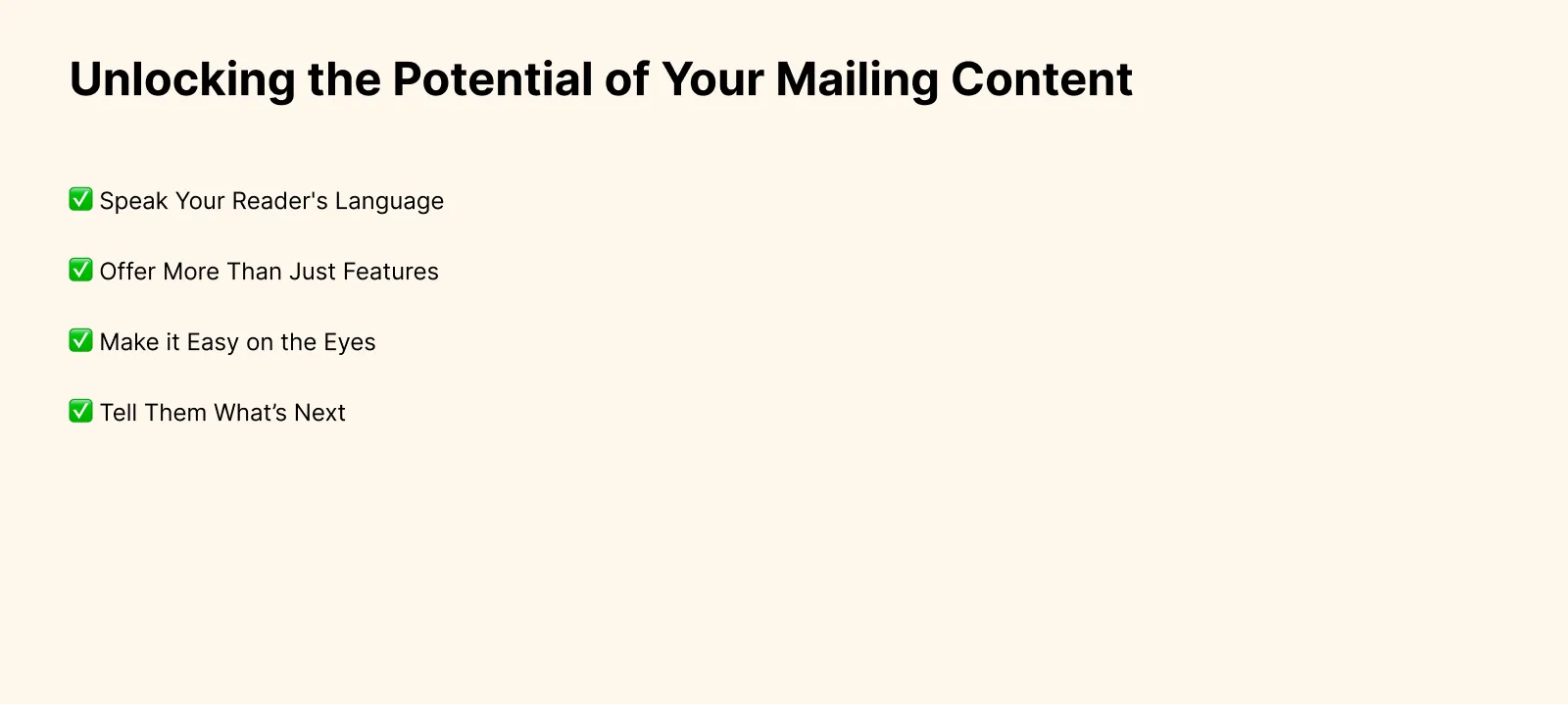
1. Speak Your Reader's Language
Writing in the second person makes the reader the star of your email narrative. Just by using words like "you," "your," and "yours," you pull them right into the center of the action. Even if the main topic is a new feature of your service, framing it in terms of how it benefits the reader will make it resonate.
2. Offer More Than Just Features
Your subscribers are smart.
They don't want a rundown of your product's specs; they want to know how it will improve their lives. So, instead of hyping up a new moisturizer because it uses "advanced hydrolytic technology," why not talk about how it'll make their skin feel like they've just had a spa day, every day?
3. Make it Easy on the Eyes
Ever open an email and immediately feel overwhelmed? Dense paragraphs can make your message sink faster than a stone. So break it up! Use bullet points, headers, or numbered lists. And don't forget to add relevant visuals; a well-placed image can speak volumes and even guide your reader through the bottom segment of your email.
4. Tell Them What’s Next
What should your reader do after consuming your wonderful email content?
Make it clear whether you want them to visit your next blog post, check out a sale, or download a free eBook.
A straightforward call-to-action (CTA) not only guides them but also increases the chances of them taking that step.
Your Checklist for Stellar Email Content
You're almost ready to hit that "send" button, but first, double-check for typos or grammatical errors. No one will take your professional tips seriously if they’re full of mistakes.
Don't have an eye for detail? Tools like Grammarly can be your best friend here.
Types of Email Campaigns
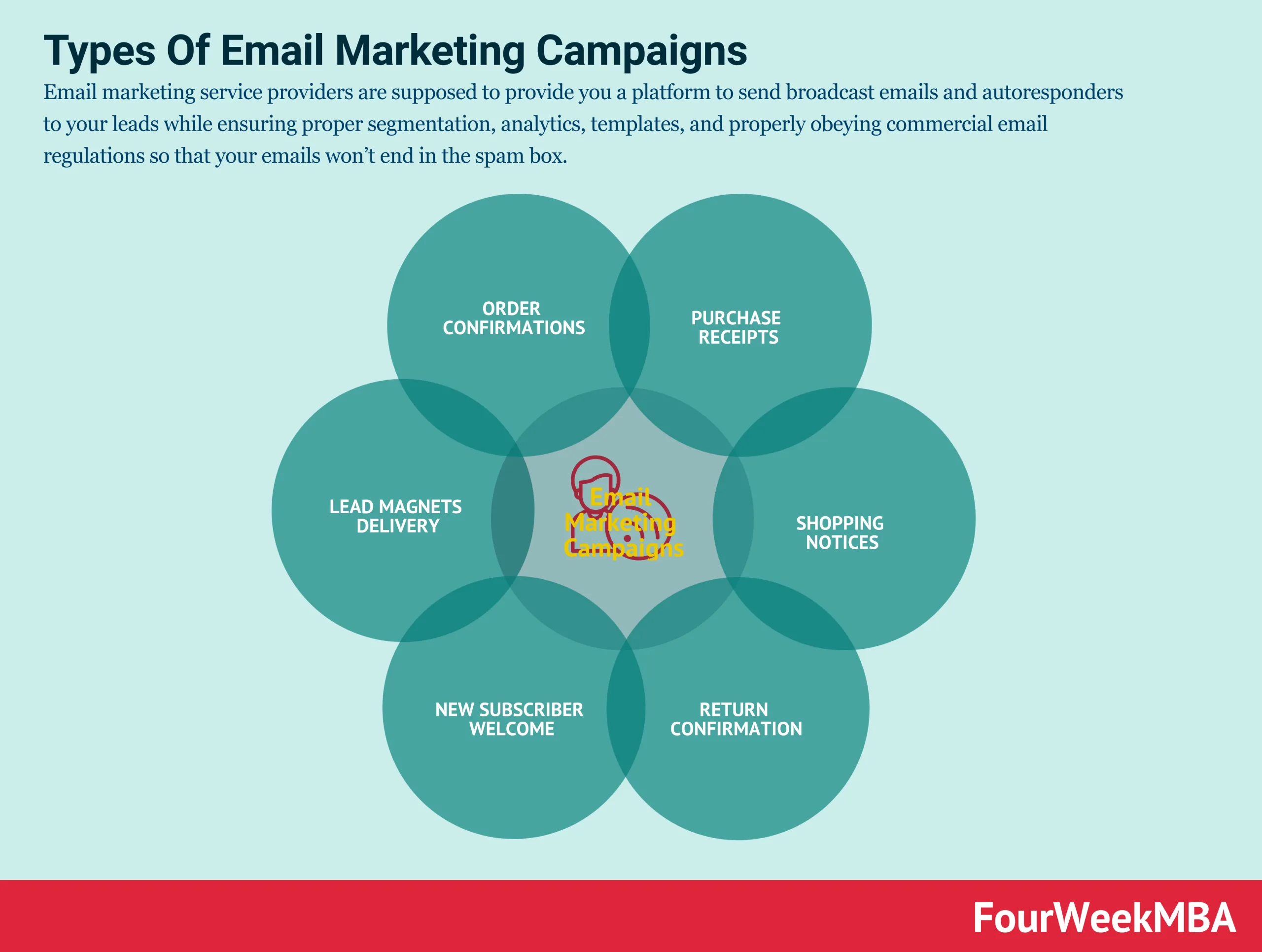
So, you've decided to up your game in email marketing.
Smart move!
Email isn't just about hitting 'send'; it's a dynamic platform that allows you to engage with your audience in myriad ways.
But before we dig deep, let's clarify what you’re getting into. Email campaigns aren't one-size-fits-all, you know?
Welcome Email or Welcome Series: Your Digital Handshake
Remember first impressions? They’re just as vital in the world of mailing content. Crafting a welcome email or a series of them can help you kick things off on the right foot with your email subscribers too. Don't just introduce your brand; show them how you can make their lives better.
Promotional Emails: Not Your Average Sales Pitch
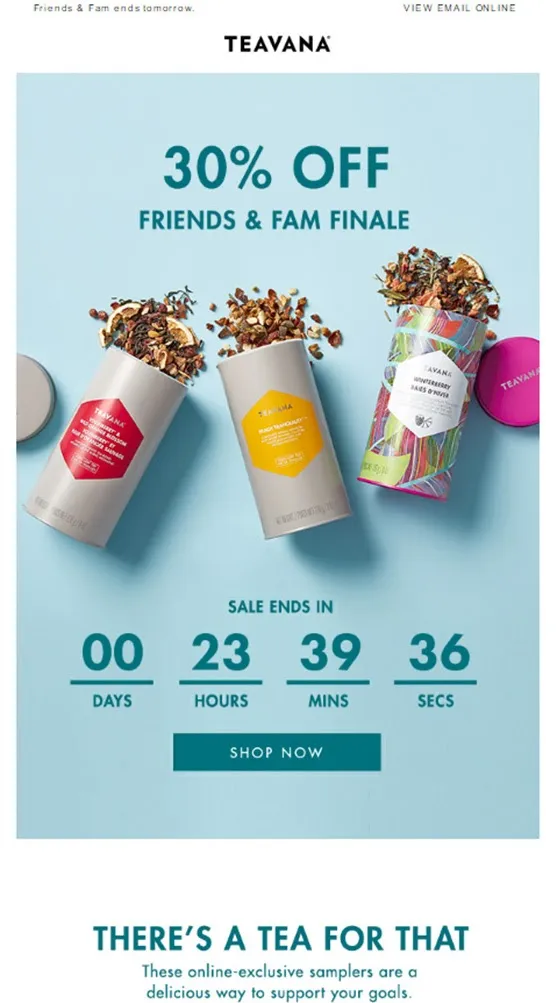
When you have a deal or offer, promotional emails are your go-to.
But beware—people can spot a hard sell from a mile away. Make your mailing content relatable, show them what’s in it for them, and get to the point.
Guides, Blogs, and Other Content Marketing: The Long Game
You're not just in it for the quick wins, right? Guides, blogs, and other content marketing emails offer value that keeps giving.
Think of this as your chance to be the wise friend who offers solid advice when needed.
Loyalty and Rewards: More than Just a Points System
Loyalty isn't just about accumulating points. It's about building a relationship. Tailor your marketing email mailing content to reward your long-term subscribers in ways that go beyond the superficial.
Testimonials and Reviews: Real People, Real Stories
Social proof, anyone? Incorporate testimonials and reviews into your mailing content to build credibility and trust. It's like your loyal, repeat customers are doing the talking for you.
Surveys and Net Promoter Feedback: Listening Is Caring
You can't improve if you don't know what you're getting wrong—or right, for that matter. Use surveys and net promoter scores to make your mailing content a two-way street.
Behavioral-Based Emails: No, It’s Not Creepy
When someone abandons a cart or browses a specific category, it’s an opportunity. Use behavioral triggers to send relevant mailing content that speaks to where your subscribers are in their journey.
Newsletters and Product/Company Announcements: Stay in the Loop
Your subscribers have a vested interest in you—reciprocate the love. Keep them updated with newsletters and announcements that make them feel like insiders.
Automated Email Content: Work Smart, Not Hard
When it comes to mailing content, automation is your silent partner in crime. Set it up once, tweak as needed, and let it do its thing.
- Interactive Email Content: Make your emails more than just a read. Incorporate quizzes, polls, or clickable elements that make your mailing content an engaging experience.
- Dynamic Email Content: Tailor your mailing content to each subscriber by leveraging data points like location or past behavior. It’s customization on autopilot.
- Informational Email Content: When they need to know something, be the first to tell them. Informational emails keep your audience in the know and show that you’re on top of things.
- Promotional and Transactional Email Content: Deals, confirmations, invoices—these types of emails are necessary but don't have to be boring. Spice up your transactional mailing content with a dash of your brand’s personality.
Building an Effective Email Marketing Strategy
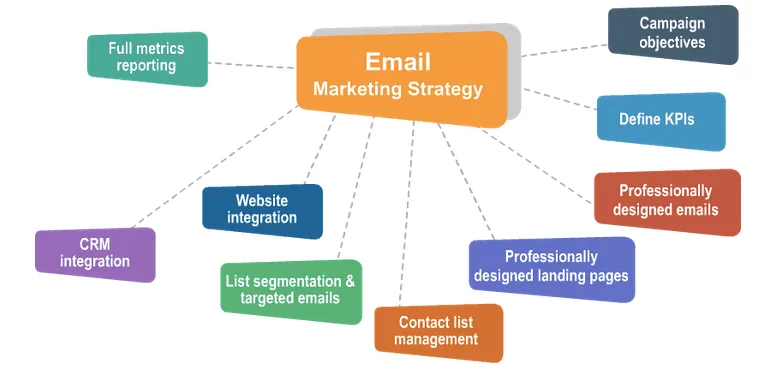
When you think about email marketing, what comes to mind?
Is it just another task to check off your business to-do list?
If so, you might be missing out on a goldmine of opportunity.
Let's roll up our sleeves and break down how to build an email marketing strategy that turns your mailing content into a key asset for your business.
Type of Mailing Content
So, you've decided to delve into the world of email marketing.
Newsletters, promotional offers, or educational content?
Knowing the type of mailing content you'll use is vital.
This initial choice sets the tone for how your audience perceives you and engages with your emails.
Segmenting Your Email List
Segmenting your email list helps you create relevant content for targeted campaigns that click with specific people.
Think of it as sorting your contacts into different buckets based on their preferences or behavior. Trust us; your audience will thank you for not flooding the subscribers inboxes again with irrelevant stuff.
Defining Your Target Audience
You need to know who you're talking to before you can create mailing content that resonates.
Defining your target audience helps you fine-tune your messaging.
Is the "opt in your audience" more likely to be interested in industry trends or looking for special discounts?
Figuring this out can be a game-changer.
Set a Goal
Before you hit send, what are you hoping to achieve with your mailing content?
Whether it's boosting website traffic or increasing sign-ups for your latest webinar, setting a goal gives you a north star to guide your content creation.
And remember, goals aren't set in stone; feel free to tweak them as you learn more about what works for your audience.
Content is the King
Great mailing content isn't just about what you want to say; it's about what your audience wants to hear.
Make your content useful, timely, and interesting.
Keep an eye on the metrics to see what types of content get the most engagement and adapt accordingly.
Measure What Matters
Metrics can be your best friend in evaluating the success of your mailing content.
Open rates and click-through rates are the usual suspects but consider digging deeper.
Learn, Rinse, and Repeat
Your first email won't be perfect, and that's okay. What matters is your willingness to learn from your metrics and customer feedback.
Don't be afraid to change course and try new types of email marketing, best practices of mailing content, or different segmentation methods.
The Anatomy of Emails
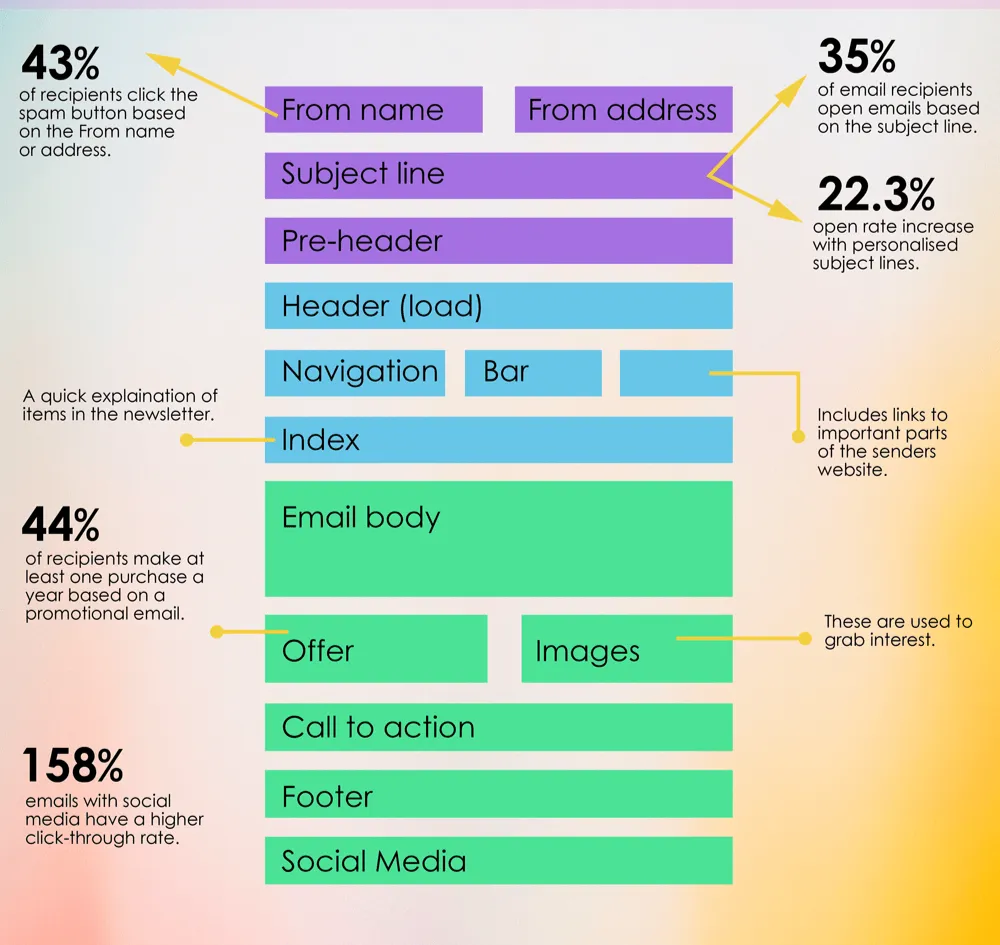
Crafting Captivating Subject Lines
Your email subject line is your first handshake with the reader.
According to CoSchedule, 35% of email recipients open an email solely based on the email's subject line alone.
Before sending out any email, the cornerstone is to write engaging subject lines. Let's be real, it doesn't matter how great your content is if your subject line doesn't prompt a click.
It boils down to relevance, curiosity, and a dash of urgency. Use numbers, ask questions, and keep it under 50 characters for best results.
Email Body

Ever watched a blockbuster movie and felt let down by a weak ending?
A compelling body ensures your email doesn’t suffer the same fate. Start by presenting the problem your reader faces.
So, how do you ensure your email message body is a home run? Let's break it down:
- Identify the Problem: Before you dive into how awesome your product or service is, acknowledge the problem your reader is facing. This shows empathy and places your mailing content in a context that matters to them.
- Present the Solution: Once the problem is clear, introduce your solution. Make it relatable by using data or a short anecdote to validate your points.
- Be Conversational: Toss the textbook language; opt for a style as if you're talking to a friend. Use "you" to directly address the reader, making the content more engaging and personal.
- Facts over Fluff: Avoid filling the space with buzzwords. Instead, use credible data and examples to make your argument stronger. Cite your sources if possible.
- Use Simple Language: Keep jargon to a minimum. If you must use technical terms, follow it up with a simple explanation. The idea is to be accessible to a broad audience, from tech-savvy millennials to tech-averse seniors.
- Interactive Elements: Think beyond text. Incorporate polls, quizzes, or clickable icons that lead to relevant articles or product pages.
- Strong CTA: Conclude with a compelling Call to Action. Tell your readers exactly what you want them to do next. Whether it’s reading another article, signing up for a webinar, or making a purchase, make it clear and make it count.
- Be Consistent: Maintain a uniform tone and style throughout the email. Consistency reinforces your brand and makes your message coherent and easy to follow.
- Preview and Revise: Always preview your email on multiple devices before hitting send. Edit ruthlessly. If a sentence isn’t adding value, it’s taking it away.
- A/B Test: Send two slightly different versions of your email to a small percentage of your audience and measure which performs better in terms of open rate, click-through rate, or other metrics you're tracking. Use the winning version for the rest of your campaign.
While consistency is key, sending the same message multiple times is an immediate turn-off and could lead to unsubscribes. Vary your content to keep your audience engaged.
Crafting an Effective Call to Action: The Keystone of Your Email
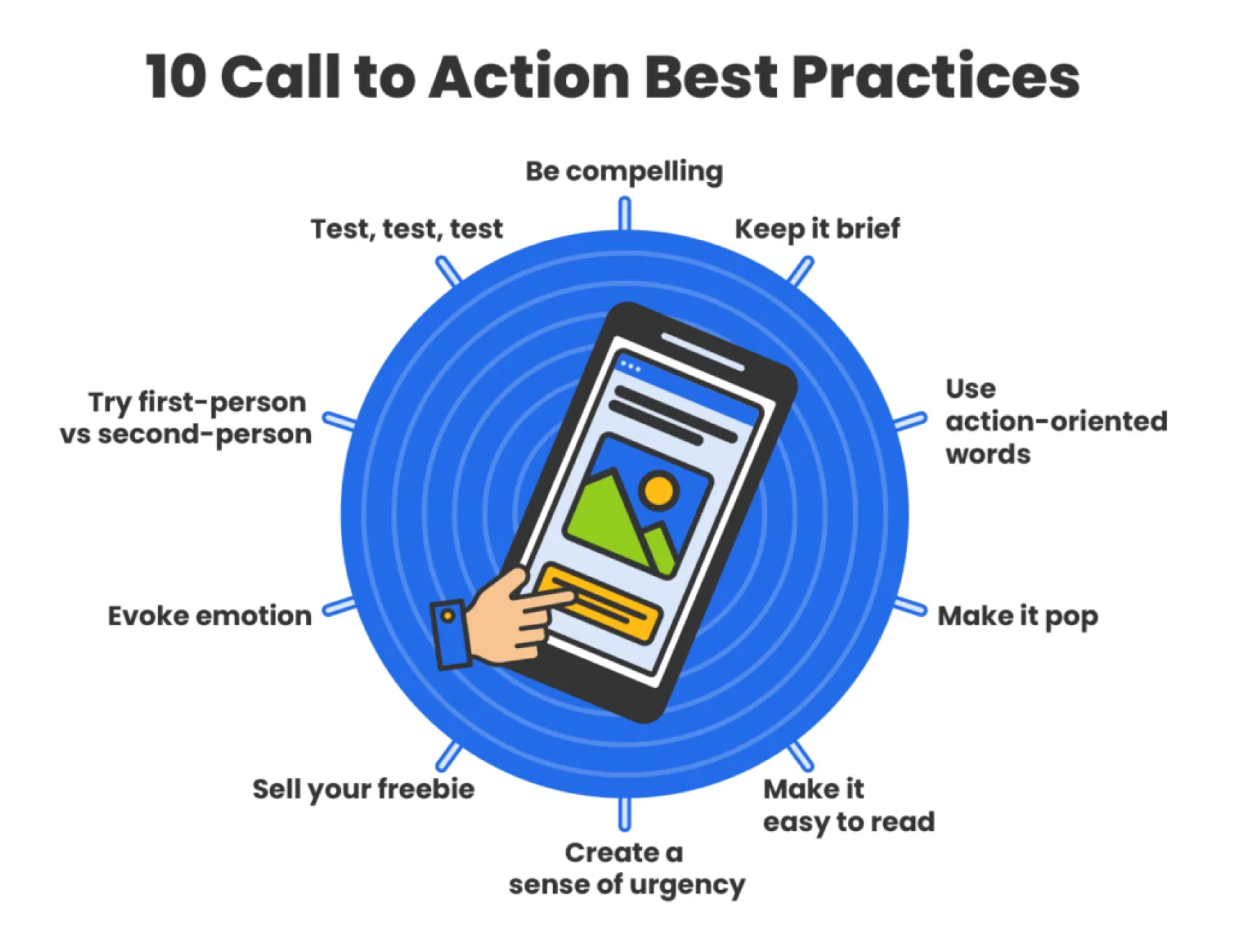
At the bottom of every effective email lies the Call to Action (CTA), a concise yet compelling invitation for the reader to take the next step.
Think of it as the "period" at the end of your sentence—it may be small, but it's indispensable.
How do you design a CTA that's both inviting and effective? Here's the breakdown:
- Be Direct: State clearly what you want the reader to do. If you want them to download a PDF, say "Download Now." If it’s to read another article, say "Read More."
- Create a Sense of Urgency: Phrases like "Limited Time Offer" or "Only a Few Spots Left" instill a sense of urgency without being pushy. This motivates your reader to act sooner rather than later.
- Emphasize Benefits: Rather than focusing on the action, you can emphasize the benefit the reader will get. For instance, instead of saying "Sign Up," you might say "Get Your Free E-book."
- Color and Design: Make your CTA stand out but not clash with the overall design of your email. It should be easily identifiable as a clickable button or link.
- Strategic Placement: The most logical spot is at the end, but that's not the only place a CTA can go. For longer emails, consider multiple CTAs at different intervals to catch the reader’s eye.
- Keep It Short: The CTA should be brief. Remember, this is a call to action, not a call to read a paragraph. Stick to five words or fewer if possible.
- Test and Tweak: The only way to know for sure what works is to test different CTAs to see which ones get the most clicks. Use A/B testing to refine your approach.
- Alignment with Email Body: Ensure your CTA aligns with the email body's content and purpose. A mismatch can confuse your readers and lead to lower engagement.
- Personalize When Possible: If your email platform allows it, personalize the CTA with the reader’s name or other individual data. Personalization can increase click-through rates significantly.
- Mobile-Friendly: Make sure your CTA is easily clickable on mobile devices. With more people checking emails on phones, a mobile-friendly design is not just good practice—it's a necessity.
Preview Text and Footer
"Who reads email footers?" you ask. Consider this: A well-crafted footer adds a layer of professionalism and serves as a secondary space for key actions.
Meanwhile, the email's preview text is like the trailer for your email; it sets the stage.
You have 35-90 characters to make an impact. Make them count.
The Relevance of Images
Visual elements break up the monotony of text and engage the senses. However, don't just drop in any stock photo.
Choose images that align with your mailing content and strengthen your narrative.
Audience Segmentation
All mailing content is not created equal.
Your audience is diverse, and so should be your emails.
Segment your audience based on various criteria—geography, past interactions, brand voice, or buying history—to deliver content that hits home.
An email drip campaign can be effective for nurturing leads over time. You can maintain interest and lead subscribers down the sales funnel by providing useful content at regular intervals.
The Importance of Testing
Don't trust your instincts; trust the data.
Before hitting 'send' on your email campaign, A/B test elements like the email subject lines used, CTA placements, and even send times.
By doing this, you’re making data-driven decisions, ensuring a higher success rate for your next email marketing drip campaign.
From Cliché to Creativity - Use Storytelling
Remember that viral video you couldn’t stop sharing?
Your email content can have that kind of charisma.
Use storytelling techniques to move away from traditional, cliché marketing tactics to something that resonates with the reader on a personal level.
The Sender's Influence: Why 'From' Matters in Email Marketing
Yes, the sender's name in your email can significantly impact its reception and effectiveness.
But why is this so, and how can you use it to your advantage?
Let's dig into this overlooked but crucial element:
- Trustworthiness: Recognizable senders encourage recipients to trust the email and are therefore, more likely to open it. If the email comes from a reputable source, that's half the battle won.
- Personal Connection: Sometimes emails sent by a specific person at a company (for example, the CEO or a community manager) rather than the company name itself can result in higher open rates. This gives the email a more personal touch.
- Consistency is Key: Whichever name you choose, be consistent in your messaging. Changing the sender name frequently can confuse your audience and potentially impact your email deliverability.
- Strategic Naming: If you run a variety of campaigns, you might want to differentiate them by sender name. For example, "[Company] Support" for customer service and "[Your Name] at [Company]" for personalized outreach.
- Legal Compliance: Depending on your jurisdiction, legal requirements for disclosing your identity in email marketing may exist. Make sure you are compliant to maintain your credibility.
- Testing, Always Testing: Just like with other elements of an email, A/B testing different sender names can provide valuable insights into what resonates most with your audience.
The name that appears in the "from" field is more than just a label; it sets the stage for your relationship with the reader.
It's another touchpoint in your branding, another chance to communicate who you are and what value you bring.
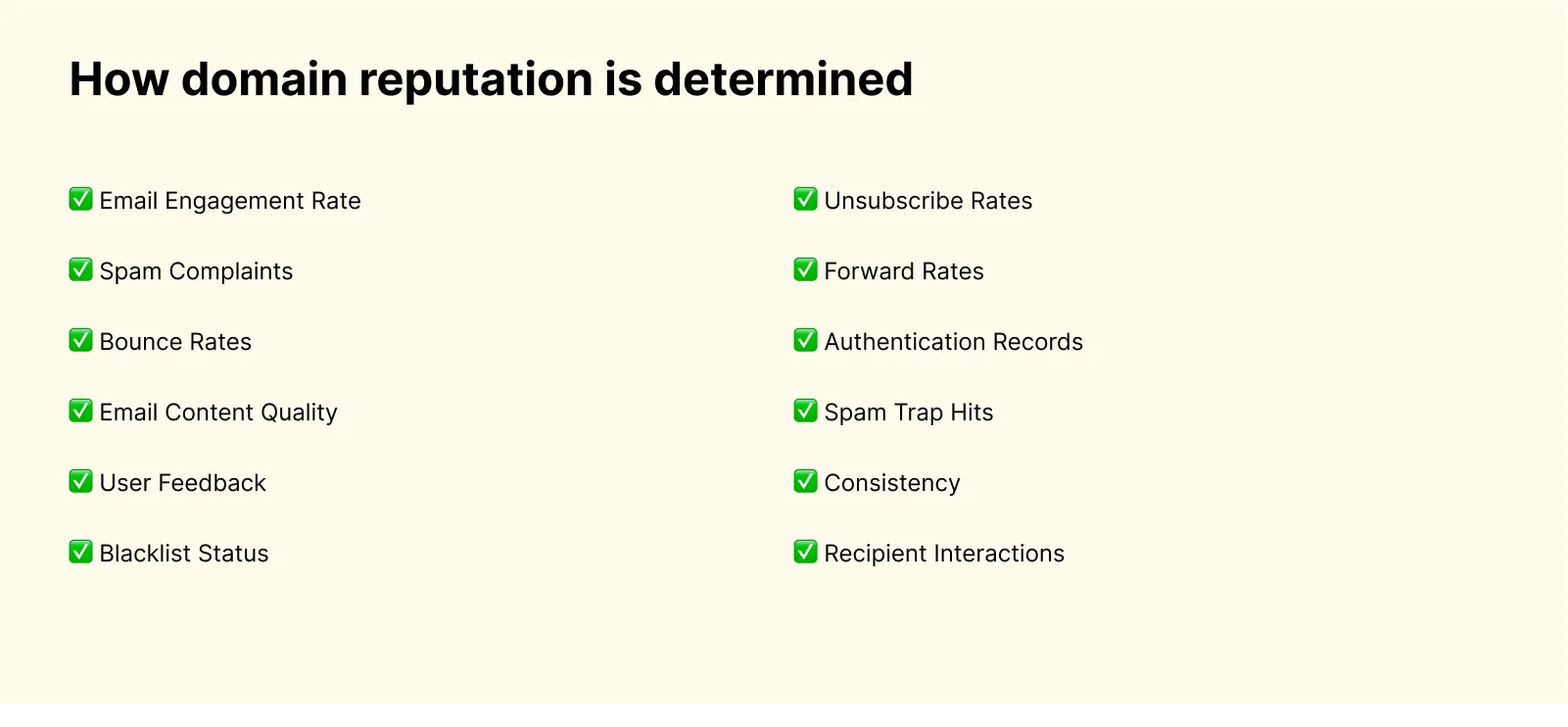
How to Choose Email Marketing Software or Email Marketing Tools and Platforms
If you're venturing into this field, your first step is choosing the right email marketing platforms or service providers.
Comparison of Email Marketing Platforms and Email Service Providers
Factors to Consider When Choosing Software
Before you even look at features, consider your needs.
Are you a small business targeting a local audience or a global brand that needs to segment your email list to deliver personalized content?
In any case, evaluating your email marketing campaigns' past performance can provide clues on what you need in software.
Why Reviews and User Feedback Matter
Reviews offer insights into user experience, especially concerning customer service, mobile optimization, and features that aren't as intuitive as they sound.
Remember, even the best-laid email marketing metrics can go awry without the right software.
The Nitty-Gritty: Features and Usability
Sure, email templates and a drag-and-drop editor are nice.
But what about email marketing best practices?
Does the software offer guidance on subject lines, email marketing campaigns, and other subtleties like the double opt-in?
Cost Versus Value
Sometimes, we chase after the low-cost options only to realize they're lacking essential features like A/B testing, or worse—leave us with a spam folder full of emails from frustrated subscribers.
So, while cost matters, ensure the platform offers valuable information for email marketers and subscribers.
Integration with Other Tools
You may have other marketing channels in place, like a blog post that captures email addresses or tracking tools that monitor customer engagement. Ensure the platform you pick integrates seamlessly.
How to Test Your Selection: Building a Successful Email Marketing Campaign
Your new email marketing software is all set up, and you're eager to send that welcome email. But wait—have you considered your email subject line? Or how the email message looks on mobile devices? Before you hit 'send,' use this as a test run to evaluate the software's efficacy and how well it aligns with your email marketing strategy.
Trial Runs and A/B Testing
We've all heard that the subject line can make or break your email. But did you know that even the preview text can significantly impact your click-through rate? A/B testing can help you refine these elements to meet the tastes of your target audience.
Metrics and KPIs in Email Marketing

Understanding Email Marketing Metrics
Ever glanced at your email analytics dashboard and felt like you're reading ancient hieroglyphics?
But once you get a grasp on these metrics, you're essentially unlocking a treasure trove of insights into your audience's behavior. Here's how:
- Open Rate: Think of this as the appetizer—enticing but not the main course. It tells you the percentage of recipients who opened your email. While this is a handy stat, it's only the start of the journey.
- Click-Through Rate (CTR): CTR informs you how many people clicked a link in your email.
High CTR?
You're in the groove.
Low CTR?
Time for some course correction. - Conversion Rate: Okay, you've enticed them with your mailing content, they've clicked through, and now, drumroll, please...did they perform the action you desired? That’s your conversion rate.
- Bounce Rate: Nope, it's not a trampoline metric. This one tells you the percentage of emails that couldn't be delivered. A high bounce rate can hurt your sender reputation, so clean that mailing list!
- Forward Rate: This is like getting the “Audience Choice Award.” It measures how many recipients liked your email enough to forward it to someone else.

Click-Through Rate and A/B Testing
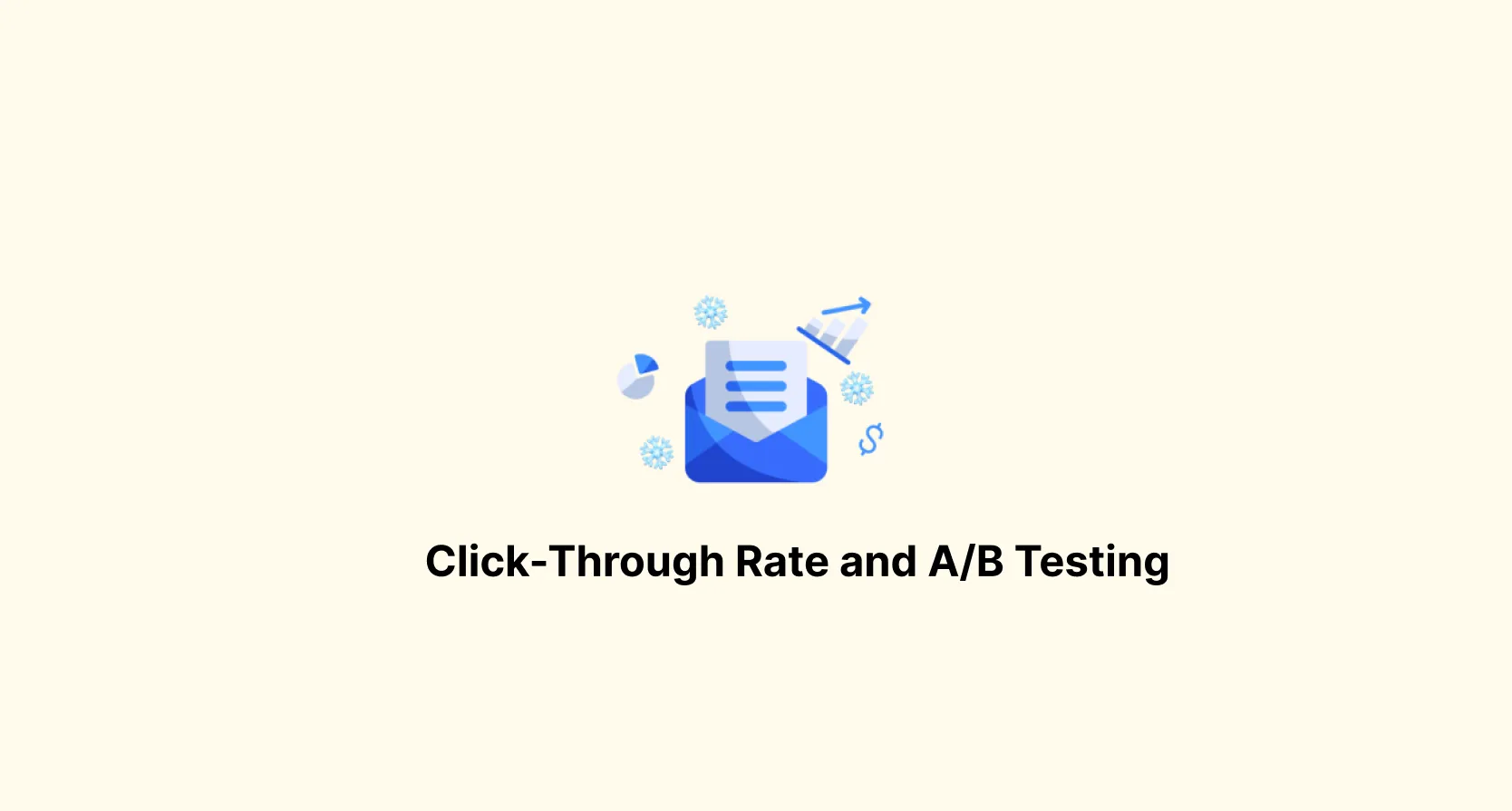
Matching your message to your audience is key, and A/B testing is your tailor.
- The Concept: Create two versions of your email with just one element changed—a headline, a call to action, an image, etc. Send each to a small segment of your list, see which performs better, and then send the winning version to your entire list.
- Why It Matters: By focusing on CTR, A/B testing allows you to hone in on what resonates with your audience. It's like crowd-sourcing your marketing strategy but without asking for public opinions on social media (because we all know how that can go).
- Real-World Example: Imagine you're torn between two subject lines for your next mailing content. One is serious, and one's a bit cheeky. A/B test them. Your audience's preference might surprise you!
Additional Metrics to Consider
- Engagement Over Time: Are your long-term subscribers still clicking and converting? If not, consider some re-engagement strategies.
- Email Sharing Rate: Similar to Forward Rate but includes sharing on social media platforms. A modern-day telltale sign of content vitality.
- Revenue per Email: Yes, it's a business at the end of the day. Divide the revenue generated from the campaign by the number of emails sent. This metric will tell you if your mailing content is hitting the mark financially.
Industry reports can offer a wealth of data and be an excellent resource for crafting your email marketing strategy.
Technical Aspects and Deliverability
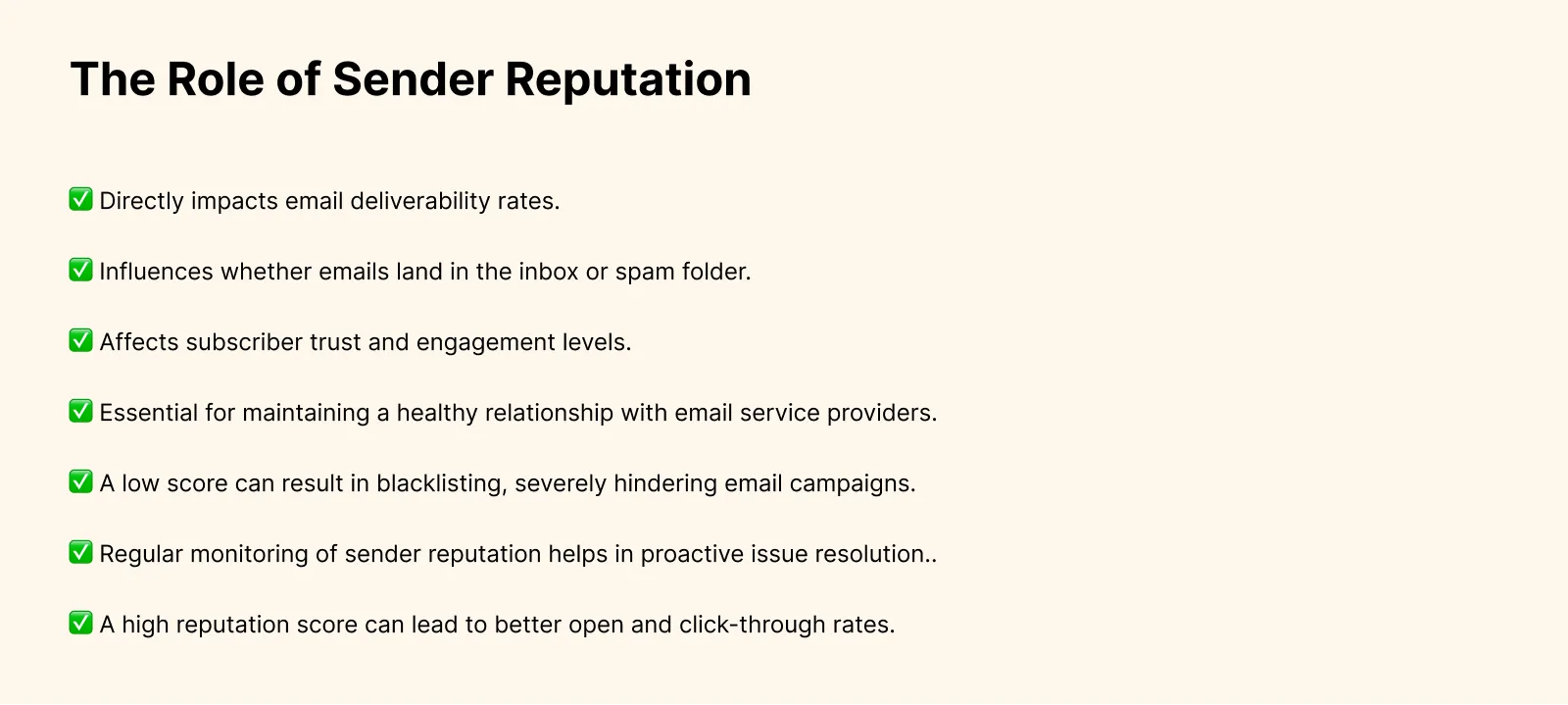
Spam Filters and How to Avoid the Spam Folder
Spam filters look for certain elements in your email messages, content, subject lines, and even sender addresses to determine if your email is worth delivering to the inbox.
If your emails often get marked as spam, it'll damage your sender reputation.
That's why it's crucial to keep a low spam report rate. You can do this by segmenting your email and contact list and sending relevant content to a particular segment of your email list and target audience.
Additionally, ensure your email subject lines don't use 'spammy' words.
Importance of Sender Reputation and Sender Address
Your sender reputation, along with the content of the email decides where your email lands:
- Inbox
- Promotion
- Spam folder
Your email metrics influence your sender reputation, like spam reports and unsubscribes.
So, what are some best practices?
Double opt-in is a safe bet.
This ensures your email subscribers genuinely want to hear from you, thereby reducing the risk of spam reports.
Also, always include an unsubscribe link in your emails.
While it may seem counterintuitive, an easily accessible unsubscribe link can improve your sender reputation by letting uninterested parties easily opt out, preventing them from marking your email as spam.
Factors Influencing Sender Reputation
Sender reputation isn't just a singular metric; it's a composite view formed from various factors. If you imagine it as a puzzle, each piece adds a layer of understanding that ISPs (Internet Service Providers) use to gauge the quality of your email marketing campaigns. Here are 10 key elements that influence your sender reputation:
- Bounce Rates: ISPs look unfavorably on high bounce rates. Regularly clean up your email lists to keep those bounce rates low.
- Spam Complaints: The number of recipients who mark your email as spam can seriously tarnish your reputation. Keeping this number as minimal as possible is crucial.
- Email Volume: Sporadic bursts of activity or sudden large-volume sends can raise red flags. Consistency is vital.
- Blacklists: Getting your IP or domain blacklisted is a reputational quagmire. Constantly monitor to ensure you're not on any blacklists.
- Engagement Rates: Higher engagement rates, like open and click-through rates, can positively impact your reputation.
- Content Quality: Your sender reputation is not just about numbers; the quality of the mailing content matters too. Emails flagged by spam filters due to poor content can damage your reputation.
- Domain Age: Older domains generally have more credibility than new ones. ISPs consider domain age as a factor when determining sender reputation.
- Email Authentication: Properly authenticated emails using standards like SPF, DKIM, and DMARC improve your reputation.
- Unsubscribe Rates: A high rate of unsubscribes can indicate that your content is not meeting your audience's expectations, which can lower your reputation.
- User Interaction: ISPs track how users interact with your email. Are they moving it to a folder? Are they marking it as important? Such interactions can either elevate or plummet your sender reputation.
Advanced Tactics in Email Marketing
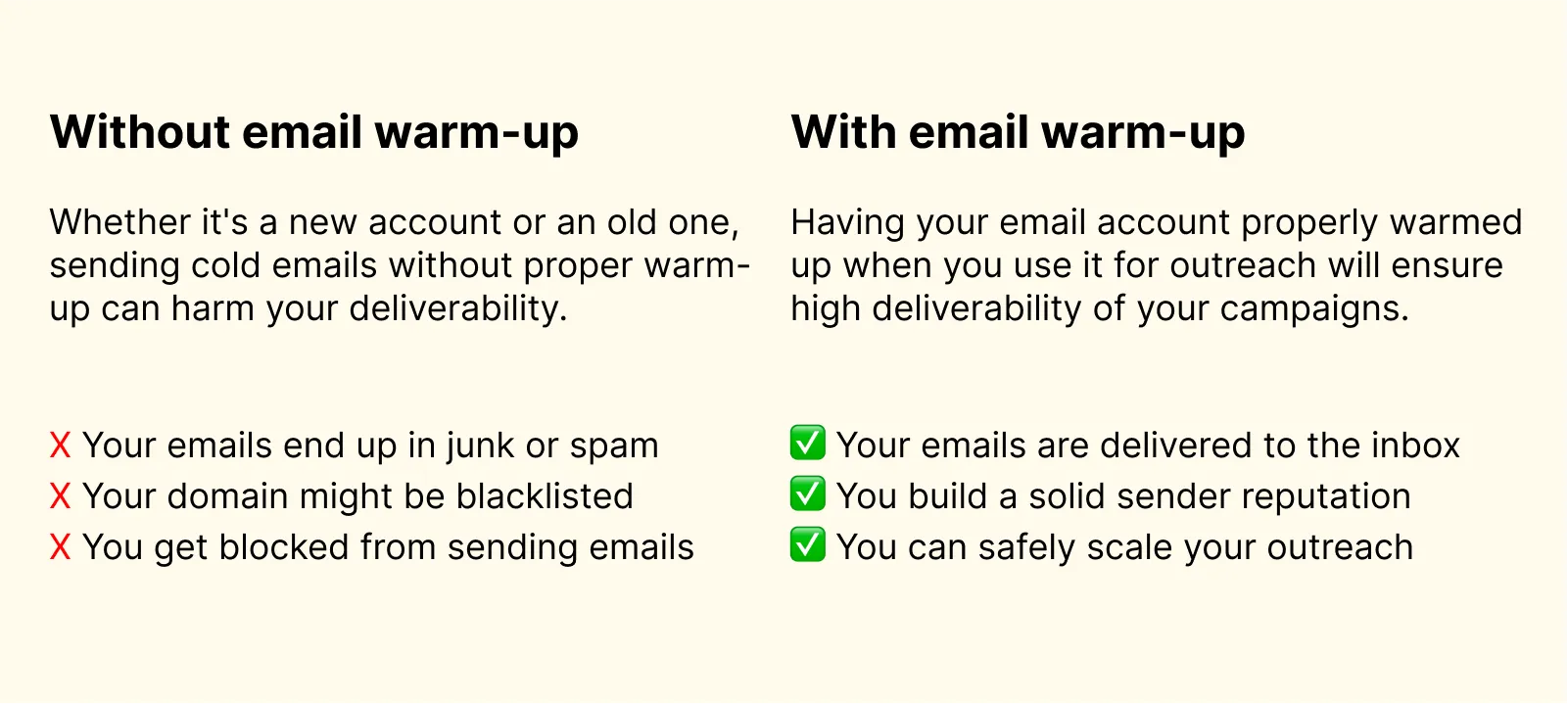
Creating a Sense of Urgency
Did you know that emails with a sense of urgency can increase click-through rates by up to 22%?
Makes you want to take action, right?
That’s the point.
A well-crafted subject line can ignite curiosity.
Use phrases like "Limited Time" or "Last Chance" to nudge your readers into clicking open your mailing content.
Overdoing urgency can backfire, making you sound like the boy who cried wolf. So, use it sparingly and authentically.
After all, nobody likes to feel tricked.
Valuable Information and Customer Engagement
Consider this—about 47% of consumers check their email while watching TV.
Your content should be compelling enough to pull their eyes away from their favorite show.
A catchy infographic or some eye-popping stats might just do the trick.
Mobile Devices and Optimization
Keep in mind that not all email clients render emails the same way.
Testing across multiple email clients can prevent formatting mishaps.
Many people check their emails on mobile devices, so your mailing content must be mobile-friendly.
From ensuring that your call-to-action buttons are easily clickable to ensuring that your email templates are mobile-optimized, you can take plenty of steps.
Customizing your Email Templates and Brand Voice
A common oversight is neglecting the brand voice when drafting emails.
Trust me, you don't want your marketing emails to read like a robot wrote them.
Your brand voice should be consistent across all channels, from email campaigns to social media platforms.
But let's take this a step further.
Have you ever tried using custom email templates?
These are a great way to keep your branding consistent while making your life much easier.
It's like having a well-organized tool kit where everything has its place and purpose. With the right tools in hand, you can build something truly remarkable.
Unsubscribe Link and Legal Compliance
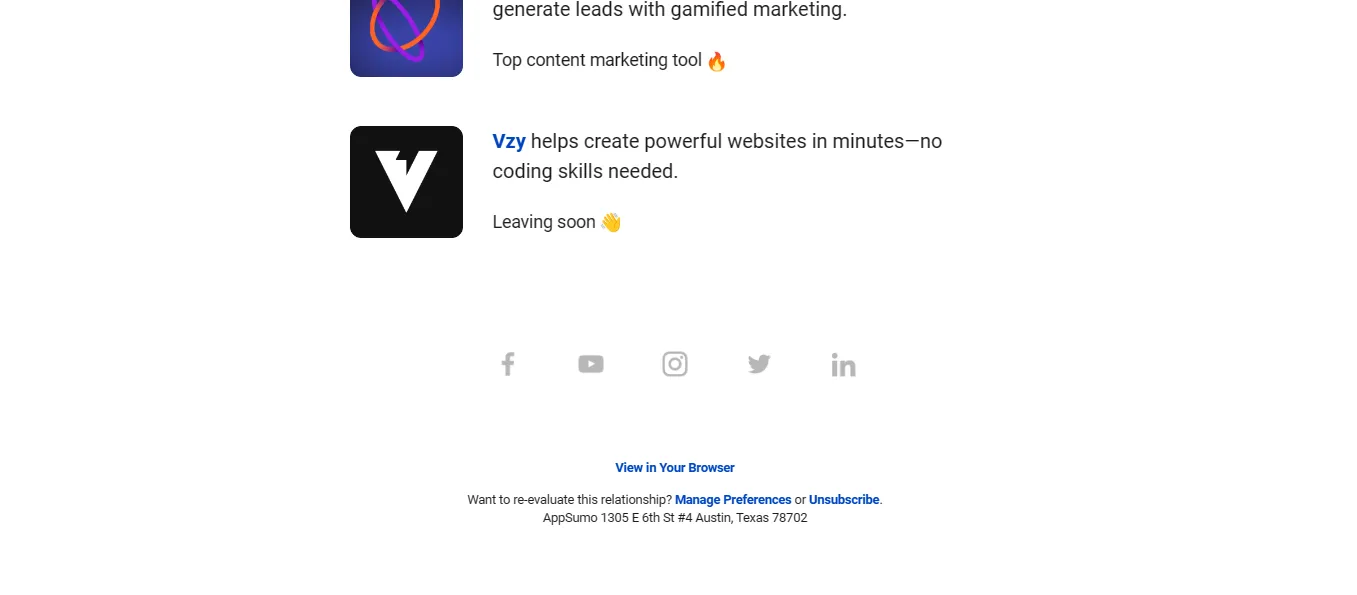
Ensure your emails reach the intended recipient by implementing best practices like double opt-in and segmenting your email list effectively.
Here's a seemingly paradoxical piece of advice: Make it easy for people to leave you.
An easily accessible unsubscribe link isn't just an email marketing best practice; it's also the law.
The last thing you want is for your carefully crafted email to end up in the spam folder or worse, for the recipient to hit the spam button. Abide by anti-spam laws to ensure that doesn't happen.
But while we're talking legalities, let's not forget landing pages.
Often overlooked, these are critical in capturing leads and complying with laws.
Double opt-in, for instance, keeps you within the bounds of the law and ensures a more engaged list of email users and subscribers.
Speaking of which, always stay up-to-date on anti-spam laws in your jurisdiction. Ignorance is no excuse, and violations can lead to severe penalties.
Conclusion

Summarizing Email Marketing Best Practices
Navigating the terrain of email marketing can be likened to a challenging but rewarding hike. Each decision you make affects your journey. So, to keep you on the right path, here are 10 cornerstone guidelines to bear in mind for your email marketing efforts:
- Audience Segmentation: Different groups within your audience have different needs. Segmentation helps you tailor your messaging for greater impact.
Drip campaigns are particularly useful when you want to segment your email list based on user behavior, ensuring that the right messages reach the right people at the right time. - Optimized for Mobile: With a large percentage of emails being opened on mobile devices, ensure your emails look good and function well on smartphones.
- Personalization: A simple "Hi [Name]," can go a long way in making the subscriber feel recognized and valued.
- High-Quality Content: Ensure your mailing content provides value, whether educational, entertaining, or simply problem-solving.
- A/B Testing: Never settle. Always be testing one element against another—subject lines, body text, calls to action—to improve performance.
- Clear Calls to Action: Every email should have a well-defined goal, translated into a clear and enticing call to action.
- Data Tracking: Use analytics to understand engagement, open, and click-through rates. Use this data to make informed decisions.
- Compliance: Never overlook the legal aspects such as GDPR, CAN-SPAM, and others. Always include an unsubscribe link.
- Regular Updates: Keeping your mailing list in the loop regularly ensures you remain in their consciousness but don't overdo it to avoid annoying your audience.
- Feedback Loop: Always offer a way for subscribers to provide feedback. Listening to your audience is the key to evolving and improving your strategy.






.jpg)

.jpg)
